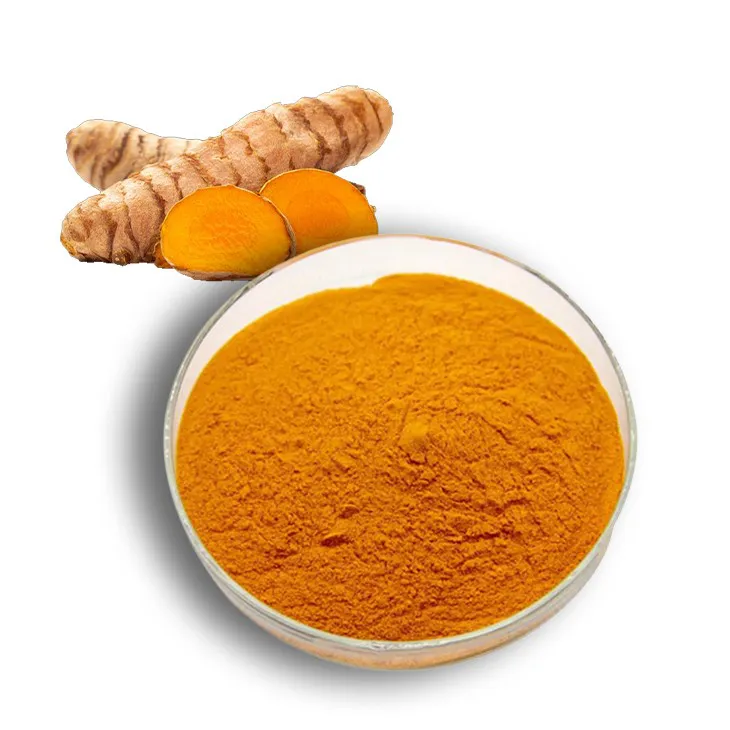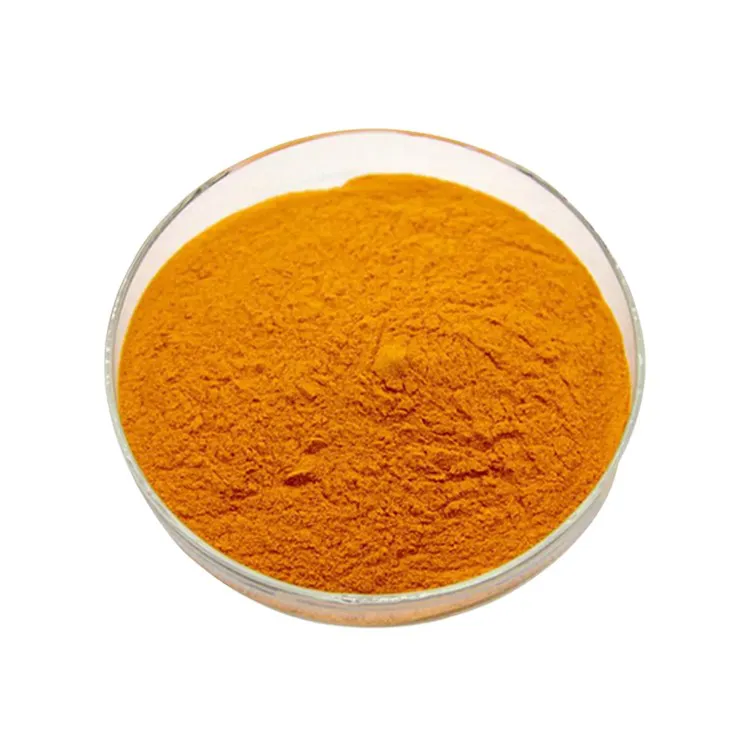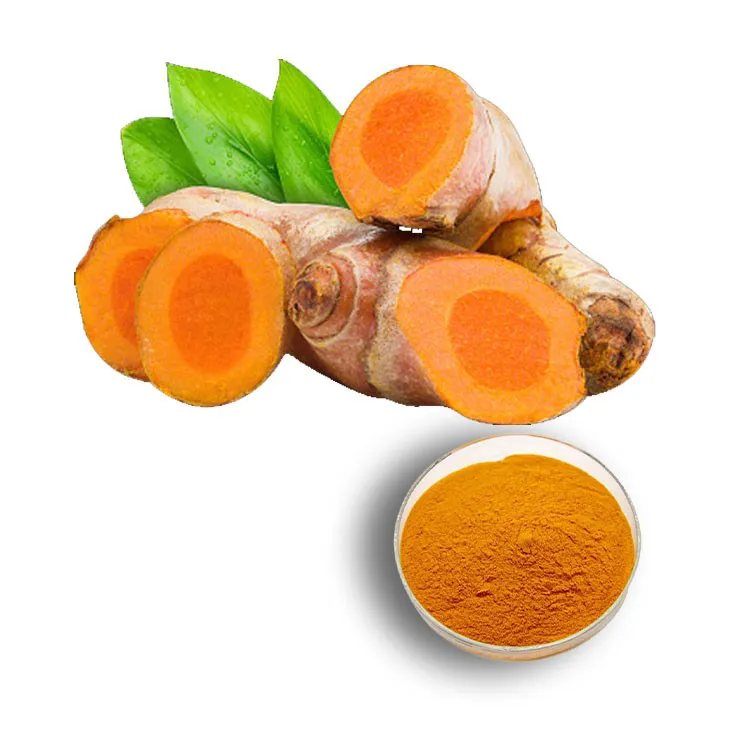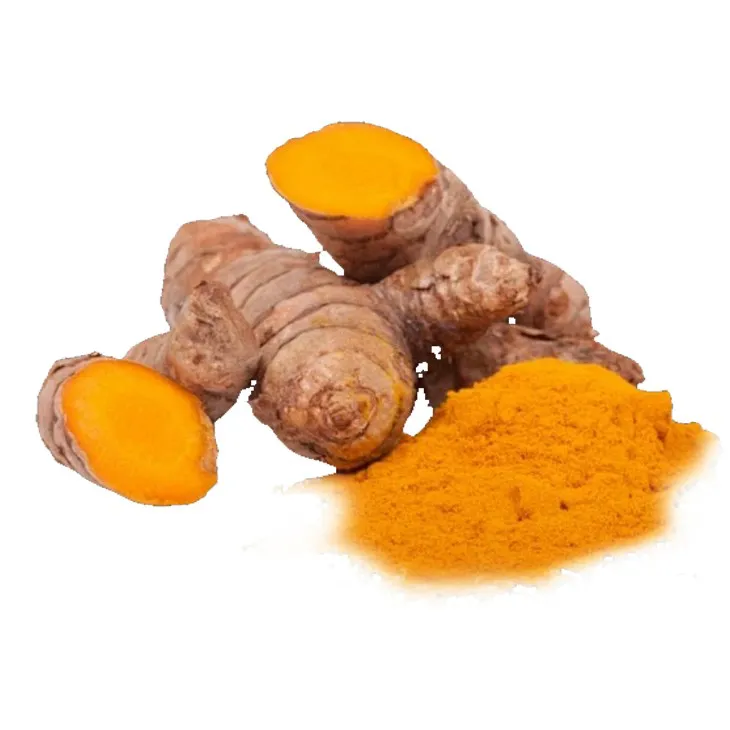- 0086-571-85302990
- sales@greenskybio.com
Curcumin: China vs. the United States
2024-11-28

1. Introduction
Curcumin, a natural compound derived from the turmeric plant, has attracted significant attention worldwide. In the context of China and the United States, there are distinct differences in the approach towards Curcumin. China has a long - standing relationship with Curcumin through traditional medicine, while the United States has been exploring it from a more modern scientific and commercial perspective.

2. Curcumin in China
2.1 Traditional Use in Chinese Medicine
China has a rich history of using curcumin - containing turmeric in traditional medicine that dates back centuries. In traditional Chinese medicine (TCM), turmeric is known for its various medicinal properties. It is often used in herbal remedies to treat a range of ailments. For example, it is believed to have anti - inflammatory effects and is used to relieve pain associated with arthritis and other inflammatory conditions.
TCM practitioners may use turmeric in the form of decoctions or powdered formulations. The knowledge of curcumin's use has been passed down through generations, and it has become an integral part of the Chinese medical heritage. This long - standing use has provided a vast amount of empirical knowledge. The empirical knowledge is based on the observations of the effects of curcumin on patients over time. However, it is important to note that this traditional knowledge is often qualitative rather than quantitative in nature.
2.2 Modern Research in China
In recent years, China has also been engaging in modern scientific research on curcumin. Chinese researchers are exploring curcumin's potential in areas such as cancer treatment, neurodegenerative diseases, and cardiovascular health. For instance, some studies are looking at how curcumin can interact with cancer cells to inhibit their growth and proliferation.
Chinese universities and research institutions are increasingly collaborating with international partners to further understand curcumin's mechanisms of action. They are using advanced techniques such as genomics, proteomics, and metabolomics to study curcumin at the molecular level. This modern research in China is building on the foundation of traditional knowledge and is expected to contribute to the global understanding of curcumin's therapeutic potential.

3. Curcumin in the United States
3.1 Scientific Research Focus
The United States has been at the forefront of modern scientific exploration of curcumin. American researchers are mainly focused on conducting evidence - based scientific studies. They are interested in understanding curcumin's chemical structure, its bioavailability, and its potential interactions within the human body.
Studies in the US are often designed to meet strict scientific standards. For example, randomized controlled trials (RCTs) are commonly used to evaluate curcumin's efficacy in treating various diseases. Research in the US has delved into curcumin's role in preventing chronic diseases such as diabetes, obesity, and certain types of cancer. Scientists are also exploring ways to improve curcumin's bioavailability, as curcumin has relatively low absorption in its natural form.
3.2 Applications in Dietary Supplements and Pharmaceuticals
Curcumin has found significant applications in the US in the fields of dietary supplements and potential pharmaceuticals. In the dietary supplement market, curcumin - based products are widely available. These supplements are marketed for their potential health benefits, such as reducing inflammation, improving joint health, and enhancing cognitive function.
The pharmaceutical industry in the US is also exploring curcumin as a potential drug candidate. However, turning curcumin into a viable pharmaceutical product faces several challenges, including its low solubility and stability. Researchers are working on developing novel formulations of curcumin to overcome these issues. For example, they are exploring the use of nanotechnology to improve curcumin's delivery to target cells.

4. Comparison of Approaches
4.1 Knowledge Base
China's approach to curcumin is based on a long - established traditional knowledge base. This knowledge has been accumulated over centuries through clinical observations in traditional medicine. In contrast, the US approach is centered around modern scientific research, which is more evidence - based and quantitative.
The traditional knowledge in China provides a holistic view of curcumin's use, taking into account the overall well - being of the patient. However, it may lack the precision and mechanistic understanding that modern scientific research in the US can offer. On the other hand, the US research may sometimes overlook the broader aspects of health that traditional medicine in China considers.
4.2 Research Methodologies
In China, traditional research methods in TCM include case studies, experience sharing among practitioners, and historical literature review. While modern research in China is adopting more Western - style scientific methods, the influence of traditional approaches still exists. In the US, research is mainly conducted using contemporary scientific methodologies such as in vitro and in vivo experiments, RCTs, and large - scale epidemiological studies.
The research methodologies in the US are often more expensive and time - consuming but can provide more conclusive evidence. In China, the traditional methods can offer quick insights based on existing knowledge but may need further validation through modern scientific means.
4.3 Applications and Commercialization
In China, curcumin - based products are mainly found in the form of traditional herbal remedies. Although there is a growing interest in modernizing these products, the commercialization is still relatively limited compared to the US. In the US, the dietary supplement and pharmaceutical industries have actively promoted curcumin - based products.
The US market for curcumin - based dietary supplements is highly competitive, with a wide range of products available. The pharmaceutical industry's exploration of curcumin as a drug candidate also has significant implications for commercialization. However, in both countries, regulatory requirements play a crucial role in determining the scope of applications and commercialization of curcumin - based products.

5. Regulatory Environments
5.1 China
In China, traditional Chinese medicine is regulated by specific laws and regulations. For curcumin - based traditional remedies, they need to comply with the regulations regarding TCM production, quality control, and safety. The Chinese regulatory authorities are also increasingly focusing on the modernization of TCM, which includes ensuring the scientific validation of traditional remedies containing curcumin.
When it comes to modern curcumin - based products, such as those developed through modern scientific research, they are subject to more stringent regulatory requirements similar to Western pharmaceuticals. This is to ensure their safety, efficacy, and quality.
5.2 United States
In the United States, dietary supplements are regulated under the Dietary Supplement Health and Education Act (DSHEA). Under DSHEA, curcumin - based dietary supplements are required to be safe, but the regulatory requirements for efficacy demonstration are not as strict as for pharmaceuticals. However, the Food and Drug Administration (FDA) still monitors the safety of these supplements.
For curcumin as a potential pharmaceutical, it has to go through a rigorous pre - clinical and clinical trial process similar to other drug candidates. The FDA has strict standards for drug approval, which includes demonstrating both safety and efficacy through well - designed scientific studies.

6. Future Prospects
6.1 Collaboration Opportunities
There are significant opportunities for collaboration between China and the United States in the field of curcumin research. China's rich traditional knowledge and the US's advanced scientific research capabilities can be combined to accelerate the understanding of curcumin's potential. For example, joint research projects can be carried out to explore curcumin's applications in treating complex diseases such as neurodegenerative disorders.
Collaboration can also occur in the area of product development. Chinese herbal medicine companies can partner with US - based pharmaceutical or dietary supplement companies to develop innovative curcumin - based products. This can involve sharing knowledge on traditional formulations from China and modern manufacturing and marketing techniques from the US.
6.2 Global Impact
The combined efforts of China and the United States in curcumin research and development can have a global impact. Curcumin has the potential to be a major contributor to global health, especially in the prevention and treatment of chronic diseases. By working together, China and the US can set standards for curcumin - based products in terms of quality, safety, and efficacy.
Moreover, the knowledge generated from the collaboration can be shared with the international community. This can help in promoting the use of curcumin in other countries and regions, leading to a more widespread recognition of its health benefits.
7. Conclusion
In conclusion, curcumin in China and the United States represents two different yet complementary approaches. China's long - standing use in traditional medicine provides a wealth of empirical knowledge, while the US's focus on modern scientific research and commercial applications offers a more evidence - based and market - driven perspective. By understanding and learning from each other's approaches, and through increased collaboration, the full potential of curcumin can be realized on a global scale.
FAQ:
Question 1: How has curcumin been traditionally used in China?
In China, curcumin has been deeply rooted in traditional medicine for centuries. It is often used in herbal remedies, which may be formulated to treat various ailments such as digestive problems, inflammation, and more. However, the specific uses are based on the knowledge passed down through generations of traditional medical practice.
Question 2: What are the main aspects of the United States' exploration of curcumin?
The United States has mainly explored curcumin from the aspects of modern scientific research. This includes studying its properties in the fields of dietary supplements and potential pharmaceuticals. For example, researchers in the US are interested in understanding curcumin's potential health benefits at a molecular level and how it can be used to develop new drugs or enhance existing dietary products.
Question 3: What are the advantages of China's long - standing use of curcumin?
China's long - standing use of curcumin provides rich empirical knowledge. This means that through centuries of use, there is a body of knowledge about its effects on different health conditions and how it can be combined with other herbs or substances. This empirical knowledge can serve as a valuable source for further research and may also offer insights into traditional medicine practices that could potentially be integrated with modern medicine.
Question 4: How does the evidence - based scientific exploration in the US contribute to the understanding of curcumin?
The evidence - based scientific exploration in the US helps to establish a more precise understanding of curcumin. By using modern research methods such as laboratory experiments and clinical trials, researchers can determine the specific chemical properties of curcumin, its mechanisms of action in the body, and its potential side effects. This scientific approach allows for a more accurate assessment of curcumin's role in health and disease prevention or treatment.
Question 5: Are there any potential collaborations between China and the United States in curcumin research?
There could be potential collaborations between China and the United States in curcumin research. China's empirical knowledge and the US's scientific research methods could be combined. For example, Chinese traditional medicine formulations containing curcumin could be studied further using US - style scientific research protocols. This could lead to a more comprehensive understanding of curcumin and potentially result in new applications in medicine and health products.
Related literature
- Curcumin: Traditional Use and Future Perspectives in Medicine"
- "The Role of Curcumin in Modern Dietary Supplements: A US - Based Review"
- "China's Traditional Medicine and the Treasure of Curcumin"
- ▶ Hesperidin
- ▶ citrus bioflavonoids
- ▶ plant extract
- ▶ lycopene
- ▶ Diosmin
- ▶ Grape seed extract
- ▶ Sea buckthorn Juice Powder
- ▶ Beetroot powder
- ▶ Hops Extract
- ▶ Artichoke Extract
- ▶ Reishi mushroom extract
- ▶ Astaxanthin
- ▶ Green Tea Extract
- ▶ Curcumin Extract
- ▶ Horse Chestnut Extract
- ▶ Other Problems
- ▶ Boswellia Serrata Extract
- ▶ Resveratrol Extract
- ▶ Marigold Extract
- ▶ Grape Leaf Extract
- ▶ blog3
- ▶ blog4
-
100% Organic Aged Garlic Extract.
2024-11-28
-
Chinese Chastity Berry Extract Factory.
2024-11-28
-
Troxerutin
2024-11-28
-
Genistein
2024-11-28
-
Green coffee bean Extract
2024-11-28
-
Gynostemma pentaphyllum extract
2024-11-28
-
Milk Thistle Extract
2024-11-28
-
Giant Knotweed Extract
2024-11-28
-
Grape Leaf Extract
2024-11-28
-
Stevia Extract
2024-11-28
-
Tongkat Ali Extract
2024-11-28
-
Berberis aristata Extract
2024-11-28





















